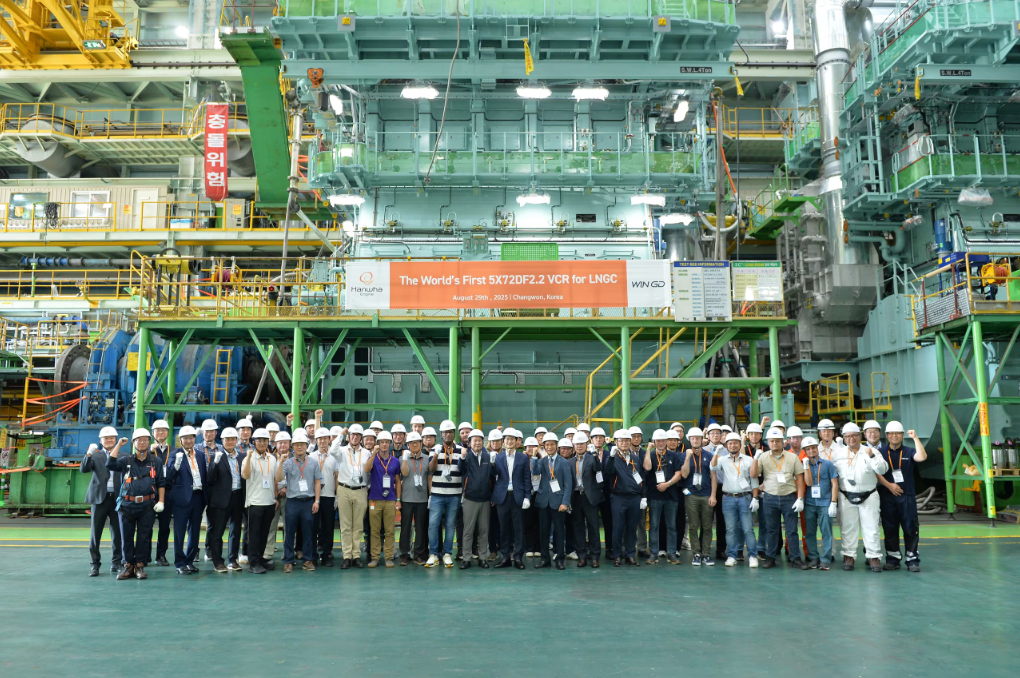Hanwha Engine has successfully developed and produced the world’s first next-generation marine engine for LNG carriers featuring Variable Compression Ratio (VCR) technology, injecting new momentum into the global shipbuilding industry’s environmental transformation.

On August 29, Hanwha Engines held a ceremony to commemorate the production of the world’s first VCR-applied X-DF engine at its headquarters in Changwon, South Gyeongsang Province, marking the official delivery of the first 5X72DF-2.2 engine equipped with VCR technology.
This engine marks the first application of WinGD’s VCR technology—developed over a decade of technical validation by the Swiss engine manufacturer under China State Shipbuilding Corporation—in LNG carriers. It is expected to be installed on LNG carriers currently under construction by Samsung Heavy Industries for the Qatar project, one of the world’s largest LNG transportation initiatives.
VCR technology is a next-generation environmentally friendly technology that adjusts the engine compression ratio in real time based on sailing conditions, thereby improving fuel efficiency and reducing carbon dioxide emissions. Its greatest advantage is that it can reduce methane emissions from incomplete combustion of LNG fuel (also known as “methane slip”) by 30% to 50%.
Hanwha Engine stated that this achievement enables rapid response to global shipowners’ demands. The company has already secured approximately 70 orders for VCR-equipped engines, totaling 700 billion won (approximately $503 million). This fully validates the market’s tangible demand for eco-friendly engine technology.
It is understood that Hanwha Engine was formerly known as HSD Engine, the world’s second-largest manufacturer of marine low-speed engines. Hanwha Group acquired and renamed the company in 2024.
Currently, Hanwha Engine holds the second-largest global market share in the marine low-speed engine manufacturing sector, primarily supplying marine low-speed engines to global shipyards such as Hanwha Ocean.
In 2013, Hanwha Engine successfully commercialized the world’s first dual-fuel marine low-speed engine. Concurrently, it pioneered the development of the world’s first marine low-temperature selective catalytic reduction (LP SCR) system for environmental protection, achieving commercialization in 2014. LP SCR is an environmental protection device capable of removing over 90% of nitrogen oxides from exhaust gases.
Yoo Moon-ki, CEO of Hanwha Engine, said, “The world’s first production of a VCR-equipped engine for LNG carriers is not just a technological implementation; it is a milestone that will accelerate the shipbuilding industry’s transition to an eco-friendly environment.” He added, “We will continue to present the future direction of the industry based on eco-friendly technology and grow into a company that makes a real contribution to the marine environment.”


